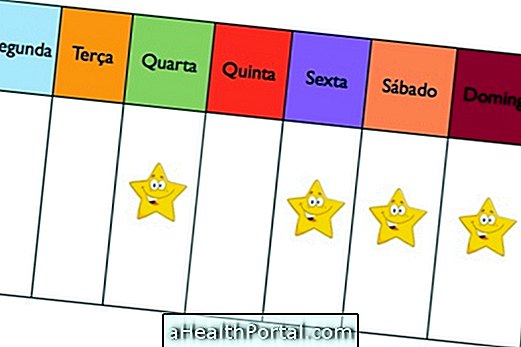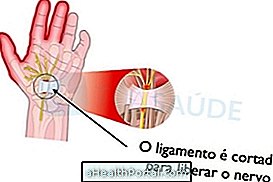Fetal cardiotocography is an examination performed during pregnancy to check the heart rate and well-being of the baby, made with sensors connected to the belly of the pregnant woman who collect this information, and is especially suitable for pregnant women after 37 weeks or in close-to-term periods.
This examination can also be performed during labor to monitor the health of the baby at this time, in addition to assessing the uterine contractions of the woman.
Fetal cardiotocography should be done at clinics or obstetrics units, which contain devices and doctors prepared for the exam, and costs, on average, R $ 150, depending on the clinic and the place where it is done.

How is done
To make fetal cardiotocography, electrodes are placed with sensors at the tip, secured by a type of strap over the woman's belly, which capture all activity within the uterus, be it the baby's heartbeat, its movement or contractions of the uterus.
It is an examination that does not cause pain or discomfort to the mother or the fetus, however, in some cases, when the baby is suspected to move little, it may be necessary to do some stimulation to wake or shake it. Thus, cardiotocography can be done in 3 ways:
- Basal : it is done with the woman at rest, without stimuli, just observing the patterns of movements and heart beats;
- Stimulated : it can be done in cases in which it is necessary to evaluate if the baby will react better after some stimulus, that can be a sound, like a horn, a vibration of an apparatus, or touch of the doctor;
- With overload : in this case, the stimulus is made using medicines that can intensify the contraction of the mother's uterus, and the effect of these contractions on the baby can be evaluated.
The examination lasts about 20 minutes, and the woman is either sitting or lying down until the sensor information is recorded on the chart, on paper or on the computer screen.
When it is done
Fetal cardiotocography may be indicated after 37 weeks only for a preventive evaluation of the baby's heartbeat.
However, it can be indicated in other periods in cases of suspected changes in the baby or when the risk is increased, as in situations:
| Risk conditions of the pregnant woman | Risk conditions at birth |
| Gestational diabetes | Premature birth |
| Uncontrolled hypertension | I'm late, over 40 weeks old |
| Pre eclampsia | Little amniotic fluid |
| Severe anemia | Changes in contraction of the uterus during labor |
| Cardiac, renal or pulmonary diseases | Bleeding from the uterus |
| Blood Coagulation Allterations | Multiple twins |
| Infection | Placental abruption |
| Mother's age above or below recommended | Very slow delivery |
In this way, with the accomplishment of this examination, it is possible to intervene as quickly as possible, in case of changes in the well-being of the baby, caused by asphyxia, lack of oxygen, fatigue or arrhythmias, for example.
This evaluation can be done at different periods of gestation, such as:
- In antepartum : It is done at any time after 28 weeks of gestation, preferably after 37 weeks, to assess the baby's heartbeat.
- In the intrapartum : in addition to the heart rate, it evaluates the movements of the baby and contractions of the mother's uterus during delivery.
The checks made during this examination are part of the assessment of fetal vitality, as well as others such as Doppler ultrasound, which measures blood circulation in the placenta, and the fetal biophysical profile, which makes several measurements to observe the correct development of the fetus. drink. Find out more about the exams to be performed in the third trimester of pregnancy.
How is it interpreted?
To interpret the test result, the obstetrician will evaluate the graphs formed by the sensors, either on the computer or on paper.
Thus, in case of changes in the baby's vitality, cardiotocography can identify:
1. Changes in fetal heart rate, which may be of the following types:
- Basal heart rate, which may be increased or decreased;
- Abnormal variations in heart rate, which show oscillations in the frequency pattern, and it is common for it to vary in a controlled way during labor;
- Accelerations and decelerations of heart rate patterns, which detect whether your heart rate slows or accelerates gradually or abruptly.
2. Changes in the movement of the fetus, which may be diminished when it indicates some suffering;
3. Changes in contraction of the uterus seen during labor.
Generally, these changes occur due to lack of oxygen to the fetus, which causes these values to decrease. Thus, in these situations, the treatment will be indicated by the obstetrician according to the time of pregnancy and the severity of each case, and may be with weekly follow-up, hospitalization or, even, the need to anticipate delivery, with a cesarean section, for example.



























